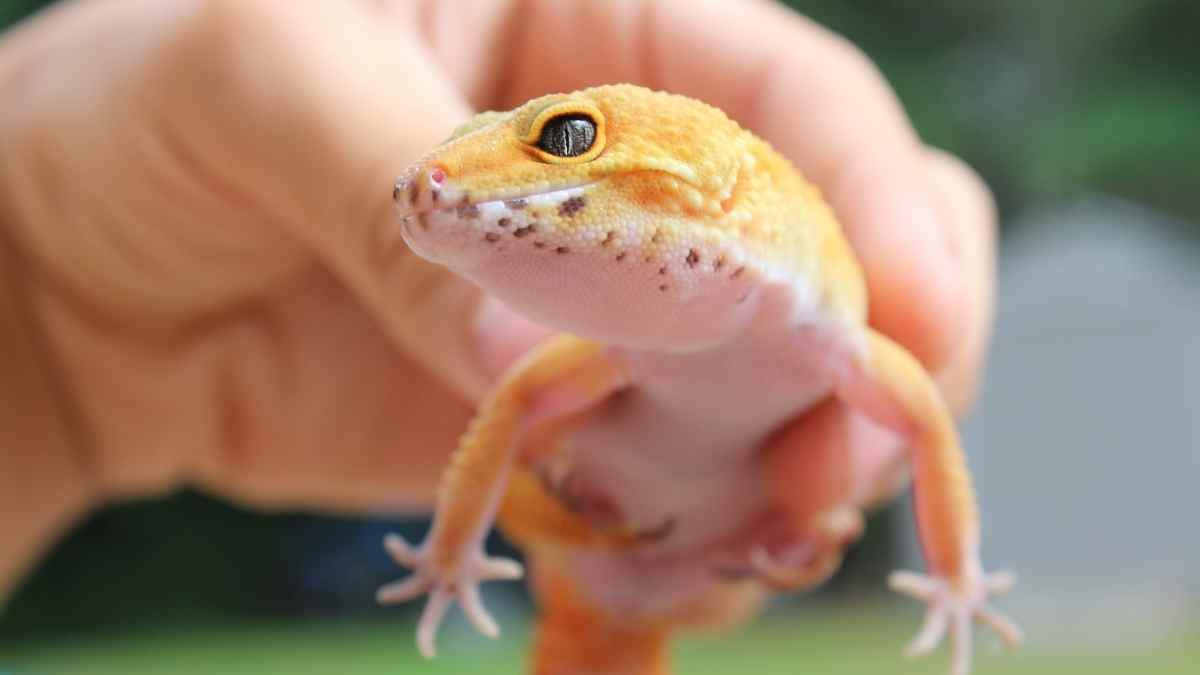Lizards undoubtedly make fantastic, elegant, gorgeous, and fun pets to watch.
However, most pet lizards are skittish and do not enjoy their owners handling them. Hence, pet owners who desire pet lizards to handle and bond with are discouraged.
What if I tell you that there are pet lizards that tolerate handling? Some of them even enjoy it when their owners hold them.
This article will find a list of pet lizards that tolerate handling very well. The pet lizards in this article will hassle you less when you try to hold them.
Also, you will find helpful tips on the best way to handle your pet lizards. Do you want to know these lizard species? Read on and find out.
7 Best Pet Lizards for Handling
Having a bond with your pets can be refreshing. Below is a list of the seven best pet lizards for handling;
Bearded Dragon
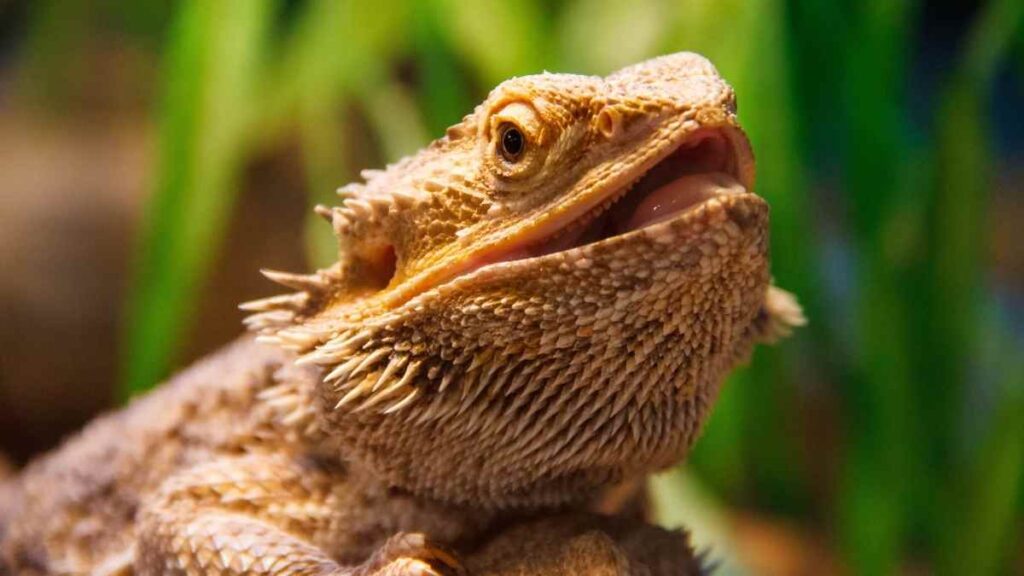
The bearded dragon tops this list for a good reason – it is a docile and calm pet. You hardly see an aggressive bearded dragon. Thus, you can handle it comfortably.
You can easily tame Bearded dragons (or beardies, as most pet owners call them). And they have behaviors that make them interesting to watch.
-

Beaded Dragon Fan Exclusive: ‘Original Hipster’ T-Shirt – Wear Your Unique Style with Pride – Unisex t-shirt
£13.00 – £20.50 Select options This product has multiple variants. The options may be chosen on the product page -

Chinese Water Dragon Aquatic Mastery Tee: Dive into Elegance with Our Exclusive Reptile Enthusiast Shirt – Unisex t-shirt
£13.00 – £20.50 Select options This product has multiple variants. The options may be chosen on the product page
Beardies are neither large nor small; they are moderately sized lizards, with an adult averaging 16 to 24 inches.
The ideal enclosure size for an adult bearded dragon is between a 55 – 75-gallon tank. That said, beware of keeping more than one male bearded in the same tank as they are territorial.
Bearded dragons live anywhere from six to ten years, so make sure they have a name you will not get bored of!
Leopard Gecko
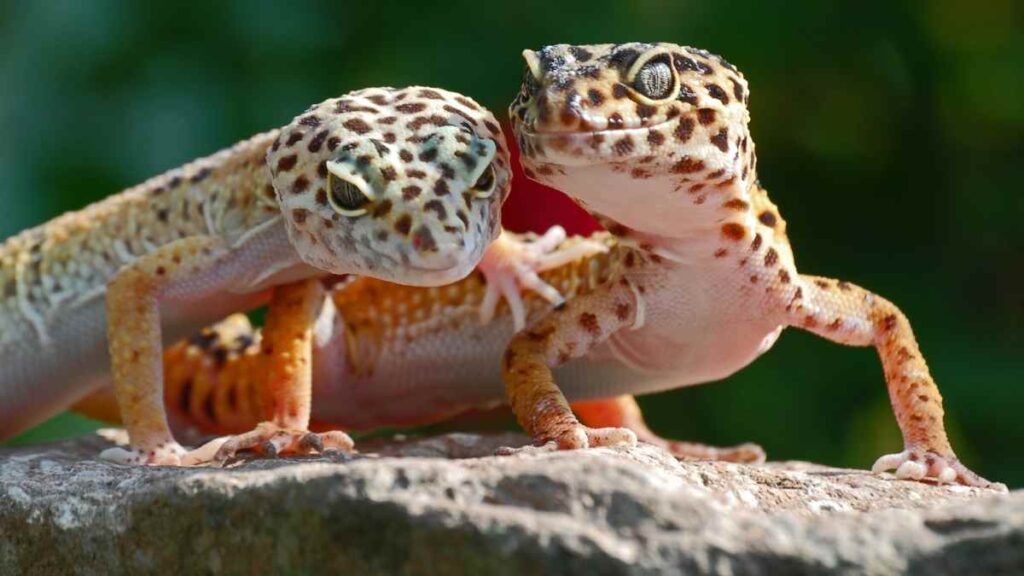
The leopard gecko is another pet lizard that tolerates handling/touching from its owners. Moreso, its care requirement is minimal compared to other lizards.
Leopard geckos are gorgeous – with most of them having the typical yellow and white color, black spots. They do have different colors (morphs) and patterns, though.
Leopard geckos are small-sized lizards; adult leopard geckos are around 8 to 10 inches (tail included). Hence, a 20-gallon tank will conveniently house two leopard geckos.
However, a male leopard gecko is territorial. So, it is best to keep just one male per tank. Also, do not keep males and females together if you are not ready to breed leopard geckos.
Moreover, the leopard gecko’s lifespan (around 20 years or more) is longer than the bearded dragon’s.
Blue Tongue Skink
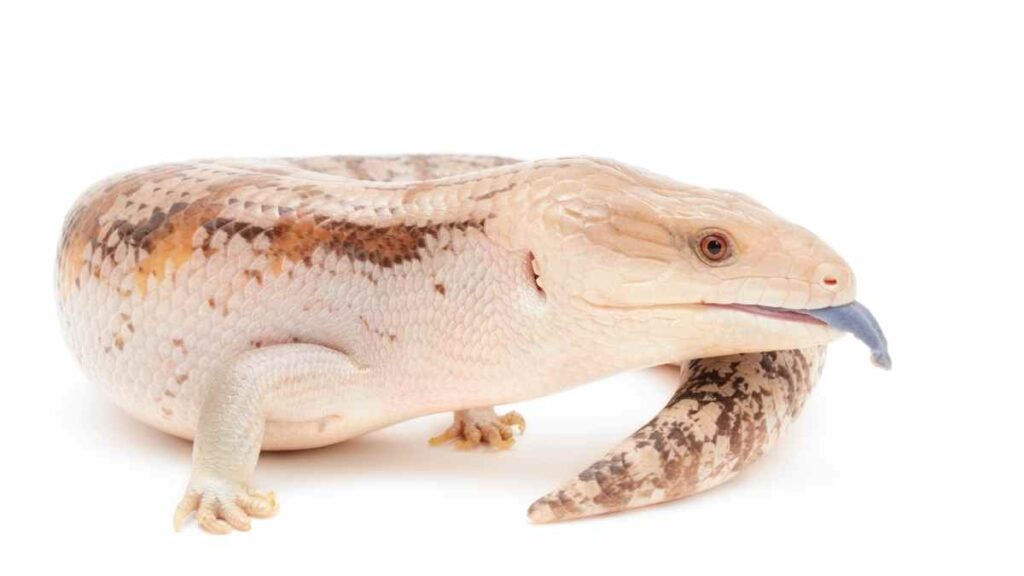
Unlike leopard geckos, the blue-tongued skink is relatively large. Thus, you would need ample space (40 – 55-gallon tank) to meet their enclosure requirements and the appropriate substrates.
However, your efforts will not go unrewarded, as the blue tongue skink tolerates handling and interaction with its owners.
Its large size (sometimes up to 20 inches) means holding it with both hands.
Blue-tongued skinks are docile, gentle, and easy to tame, making them suitable pet lizards for beginners. Moreso, their temperaments make them one of the most child-friendly lizards, but an adult should always remain in charge when a young child is nearby or interacting with the lizard.
It is best to supervise children’s interaction with blue tongue skinks. Also, you can expect your blue-tongued skink to live anywhere from ten to twenty years.
Argentine Black and White Tegu
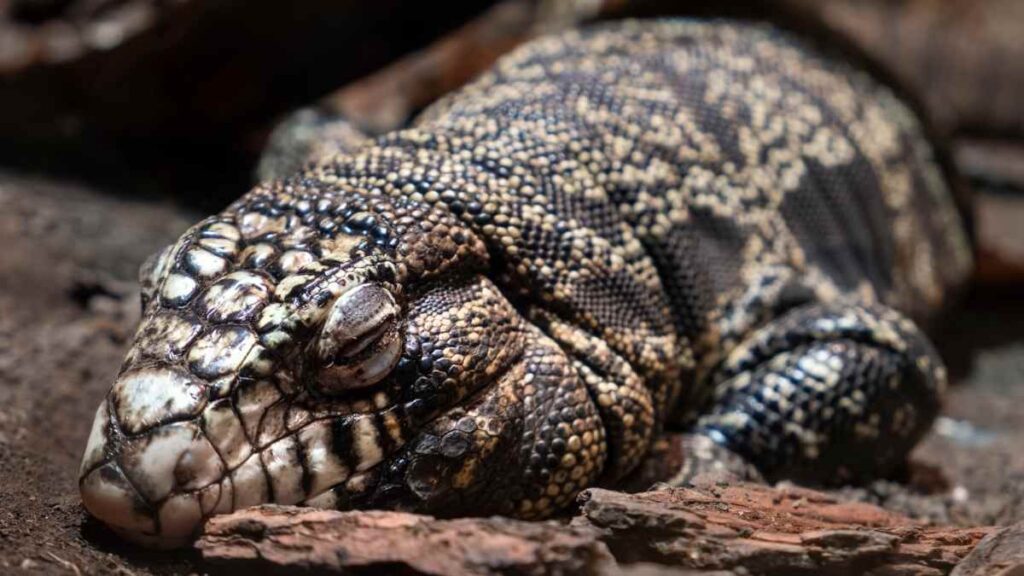
Argentine black and white tegus are docile, especially if you regularly handle them from when they are young.
You will find them easier to tame than other tegus, particularly the Columbian tegus – which have the same beautiful black and white patterns but are smaller.
Since Argentine black and white tegus do not climb, you do not need a tall enclosure to house them. So, a 6 x 3 x 2 feet enclosure is enough to house an adult black and white tegu.
Black and white tegus can grow up to 4 inches and live for around 15 years in captivity.
Ackie Monitor
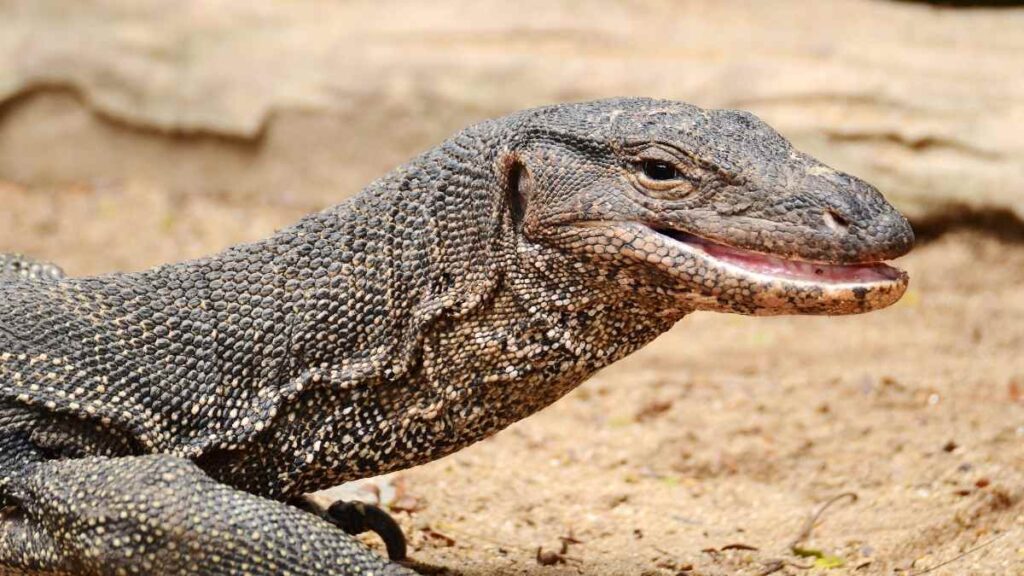
Although Ackie monitors tolerate handling well, you need to exercise patience with them. Young Ackies are usually skittish but become docile as they grow older.
They are one of the smallest monitor lizards (monitors have a reputation for being giant lizards). An adult ackie monitor can grow to be around 27 inches.
In addition, to keep an Ackie monitor, you should be ready for a long-term commitment. Ackies can live for as long as fifteen to twenty years.
Ackies are not picky when it comes to food; you wouldn’t have a problem feeding them. However, it is expedient for you to watch how much they eat, so they do not develop weight problems.
Chinese Water Dragon

The water dragon’s friendliness, handling tolerance, and docile nature qualify it for this list. They are one of the most friendly pet lizards you may imagine
However, it would be best to handle water dragons regularly, so they don’t become aggressive.
Moreover, Chinese water dragons are the best alternatives for Iguanas, as many pet owners regard water dragons as a friendlier version of Iguanas.
Male Chinese water dragons usually grow to be around 3 feet, while females grow to be about 2 feet. Their life expectancy ranges from 14 to 16 years. Some of them live up to 20 years, though.
In addition, Chinese water dragons are omnivores, meaning that you have a wide range of options to feed them.
However, one major downside for water dragons is that their care requirements are intensive and specific. Still, if you’re up for it, you’d never regret keeping a Chinese water dragon.
African Fat-Tailed Gecko
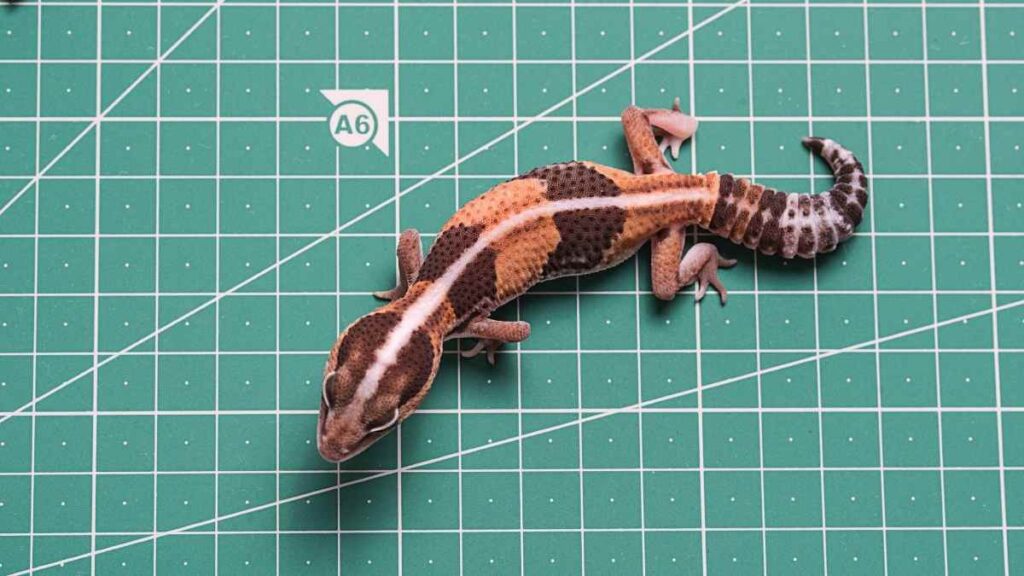
African fat-tailed geckos are generally docile and easy to tame, which explains how they made their way onto this list. Furthermore, they are fascinating creatures and tolerate handling well.
However, you should not startle, scare, or hold them tightly, as they can drop their tails. The tail will grow back, but it will not look the same.
Also, fat-tailed geckos are small lizards; a fully grown fat-tailed gecko is usually around 7 – 9 inches. So, you do not need much space to house them; a ten or 20-gallon tank will do for two geckos.
Fat-tailed geckos are primarily insectivores (i.e., their diet consists majorly of insects). Thus, you can feed them crickets, mealworms, or wax worms.
For maximum nutritional value, endeavor to gut-load the insects before feeding them to your pet lizard.
Tips on Handling Pet Lizards
While the lizards in this article tolerate handling well, you still need to be careful when handling them(especially the skittish ones). “Why?” you may wonder.
Handling stresses most pet lizards and makes them feel threatened. Therefore, they can become aggressive, bite, or even cut off their tails in defense.
What is the best way to handle/hold your pet lizards that wouldn’t stress them?
Here are some tips that you will find helpful whenever you handle your reptile pets;
- Here’s how to handle your lizard if it is a small lizard. First, scoop it up in your hands, and hold its front legs between your thumb and forefinger. That way, you prevent the lizard from hurting itself when you handle it.
- If you’re dealing with a large lizard species, you should handle them with two hands to support its weight. You use one hand to pin the hind legs and the other hand to pin its front legs along the body.
- Alternatively, you can use cups for a small pet lizard. You ‘shoo’ them into the cup and then cover it with your hand.
Conclusion
Finally, after you may have identified the pet reptiles (lizard) that you want to keep from the list above, endeavor to conduct further research on the requirements of keeping them.
Also, make provision for their enclosure, diet, and health requirements for the particular species you intend to keep. Remember to add climbing options for the lizard species that love climbing, too.
You should also avoid stressing your lizards by overhandling them.
Good luck!

